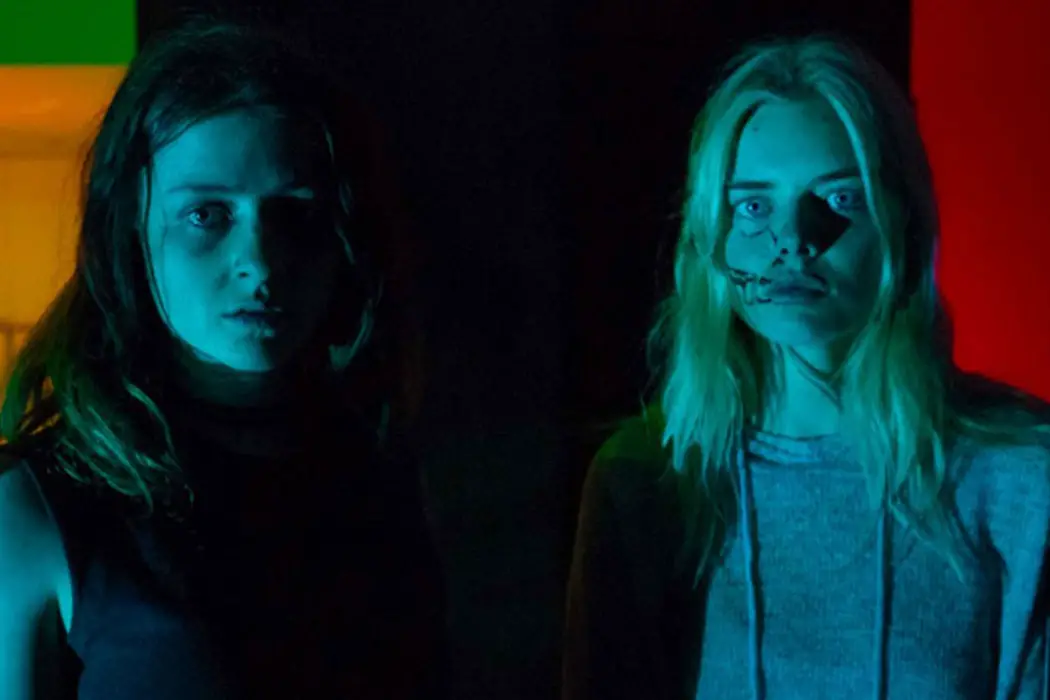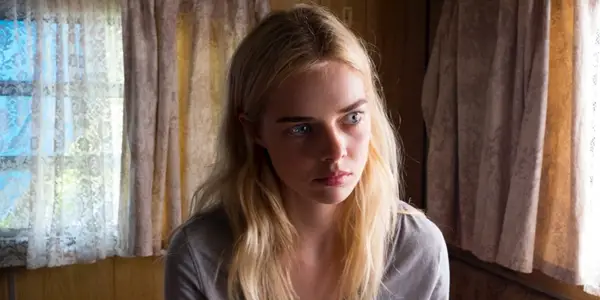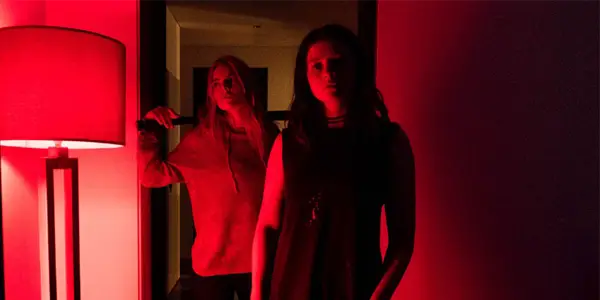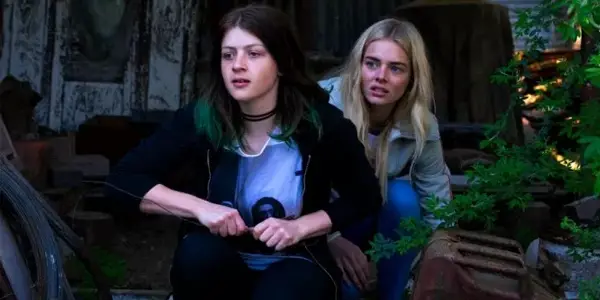BAD GIRL: A ’90s Thriller With Modern Day Lenses

Alex is a 28 year-old West Australian who has a…
Looking back at film history, we can usually divide up each decade into different periods, highlighted by shifts in style and tone which are aided by advancements in technology and a constantly shifting political climate. If we examine the period of the ’90s, we see a couple of noteworthy trends – a studio system that constantly sunk way too much money into large-scale blockbusters, the rise of independent cinema, the capitalisation of movie soundtracks, the constant rebooting of old TV shows/movie brands into self-aware comedies and a thread of superhero films. Sound familiar?
Whilst people expect the current film slate to be drenched with politically-charged cinema given how explosive the world feels at the moment, instead we are currently repeating the cinematic history of the 1990s. That was a time where the switch from film to digital filmmaking allowed for more experimentation, coupled with a generation who grew up with the transformative cinema of the America New Wave of the 1970s, a series of pessimistic and political films that people expect to emerge in the coming years thanks to the rise of partisan filmmakers and socially-aware filmmakers.
The Return of the B-Movie Thriller
So why am I bringing this up when talking about Bad Girl, Fin Edquist‘s new Perth-shot thriller? One of the most prevalent subgenres that rose during the 1990s was that of the erotic thriller. Thanks to the success of Adrian Lyne‘s erotic thriller Fatal Attraction in 1987, and the rise of softcore adult entertainment that emerged during the home video/cable network markets, the erotic thriller became one of the go-to subgenres that provided a consistent return on investment until audiences became sick of them when the 2000s hit. They usually featured a corruptible protagonist who is lured or stalked by a female antagonist via sex into doing something dangerous or illegal, filled with passionate sex scenes that engaged with the male gaze, with stories that were more explicit versions of the typical noir stories of the 1930s.
The best known of these films from this era include Bound, Basic Instinct, Night Eyes, Sliver and Wild Things. It’s with this in mind that we examine Fin Edquist’s Bad Girl, a present-day erotic thriller that aims to use these narratives of the 1990s with the aesthetics of the digital mumblecore movement to make a genre film that features shades of recent hits Gone Girl and The Gift.
Unfortunately, the film is stuck with a script that is more interested in its constant twists than in building dynamic characters or organic dialogue. For a film that maintains and subverts the typical Australian social realist tropes at the same time, it makes for a frustrating watch for someone who is eager to see Australian cinema transcend the constant need for cultural relevancy.

After a house party gone wrong, troubled teen Amy Anderson (Sara West) is forced to move into a model home in the middle of the country with her adoptive parents Michelle (Felicity Price) and Peter (Benjamin Winspear). As her attempts to escape from the isolated home fail, Amy meets the benevolent Chloe (Samara Weaving), a local girl who immediately becomes friends with Amy.
As their relationship grows closer, secrets from Chloe’s past threaten to destroy everything that Amy holds dear in life. One of the subversions that the film attempts is to make an erotic thriller which features two lesbian protagonists, where their lesbian relationship is just part of the film, rather than the pure focus. The casual and progressive attitude of their relationship is great to see, but it leads into one of the film’s major narrative problems, which is its lack of subversion outside of this romantic subplot.
A Mixture of Well-Worn Genres
Although calling the film an erotic thriller is ultimately a broad tag (as the film is a mixture of LGBT, Coming of Age and Crime cinema as well), the film barely touches on any of these genres to warrant addressing them as such. Whilst the natural handling of the LGBT elements are refreshing (which brings back shades of The Wachowskis’ Bound), the brief erotic scenes end up feeling like most erotic scenes in films in general – ultimately insignificant and just an exploitative injection to entice general audiences into engaging with the material.
The basic plot of the narrative is something we’ve seen before, and removed of the LGBT themes, it doesn’t do enough to differentiate itself from the 1990s erotic thrillers that clearly inspired its creation. Despite the third act being crammed with a ton of different revelations and plot twists, none are dramatic enough to shake off this feeling of familiarity, which is a stench that constantly wavers over the film’s 90-minute runtime.

Outside of a couple of Nicolas Winding Refn/giallo inspired scenes of neon-lighting and frames of glass capturing our characters, the film features the typical aesthetics of the low-budget mumblecore film, with the digital photography simply capturing the action on screen without any form of exciting or engaging camera-work to help bolster the film’s slow-burn nature.
It’s also very reminiscent of the large string of social realist films that have drenched the filmography of Australian cinema for the past decade, a series of dramatic movies that have focused on kitchen sink dramatics and expressions of emotional acting rather than complex narratives or engaging aesthetics. To compliment this, the soundtrack by Warren Ellis (whose latest collaboration with Nick Cave was the moody soundtrack for Hell or High Water) helps to give the film a sense of energy at times when it is needed, but for the most part consists of a laid-back series of morose guitar playing that adds to the slow-burn nature of the first half of the movie.
Acting Out
The acting by the two central leads, Tamara Weaving (niece of Australian actor Hugo Weaving) and Sara West (who some may know from Ash VS Evil Dead) is solid enough, even though the personality transformation that Weaving is required to perform in the third act doesn’t exactly translate as well as one would hope. The rest of the case are fine, but are constructed as such thin, one-note cardboard characters that they don’t exactly have much to work with, which limits what they can do with their performances. There’s nothing here that could be deemed bad or distracting to the film as a whole, but nothing that exactly inspires grand praise or anything to raise the film above its B-movie trappings.

Whilst the script and general narrative of the film is just a distillation of its inspirations filtered through a modern day perspective and aesthetics, one thing the film does nail is its universal nature; it’s an Australian film that attempts to tell a genre story in order to highlight its cultural relevancy. One of the major detractions from a lot of Australian films of the past decade is their glaring moments of forced cultural relevancy: scenes and imagery that are inserted purely to remind the audience that what you are watching is an Australian film, rather than just some random film from any country.
While it’s important to have a sense of identity when creating a film, the incessant need to insert these ham-fisted junctures of patriotic visual signifiers usually detracts from the film’s organic narrative and ability to be relevant on an international scale. Though the film is set in a country town in Western Australia, the film focuses on its narrative and building suspense rather than trying to pander to Australian viewers, meaning the film has a good shot of doing well overseas. For someone who is quite vocal about the current state of the Australian film industry, this is quite a refreshing thing to see.
Conclusion
Fin Edquist’s Bad Girl is a decent genre film that is unfortunately limited by a script that borrows heavily from the ’90s thrillers that inspired it – so much so that it detracts from the overall enjoyment of the picture. Whilst Edquist should get points for making a thriller which features lesbian protagonists that doesn’t reduce their sexuality to a gimmick or main focus of the narrative, the film is crammed with so many twists and generic narrative beats that the central LGBT relationship is the only thing keeping the film different from any similar movies of the past.
Featuring a solid group of actors and a substantial soundtrack by Warren Ellis, the film is just a simple thriller that doesn’t subvert its material or feature enough originality for me to outright recommend the film, but I do respect it for trying to shed the enclosing factor of cultural relevancy in favour of a pulpy erotic tale that has the potential to succeed overseas.
What do you think of the current state of Australian genre films?
Bad Girl will be released in Australia on April 27th. For more international release dates, click here.
Does content like this matter to you?
Become a Member and support film journalism. Unlock access to all of Film Inquiry`s great articles. Join a community of like-minded readers who are passionate about cinema - get access to our private members Network, give back to independent filmmakers, and more.












